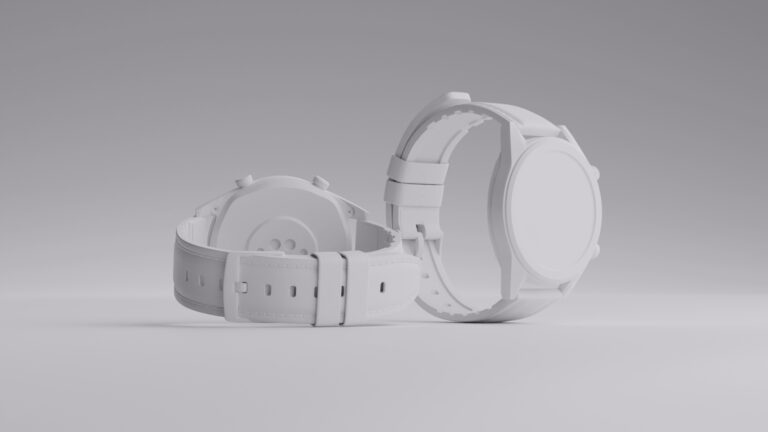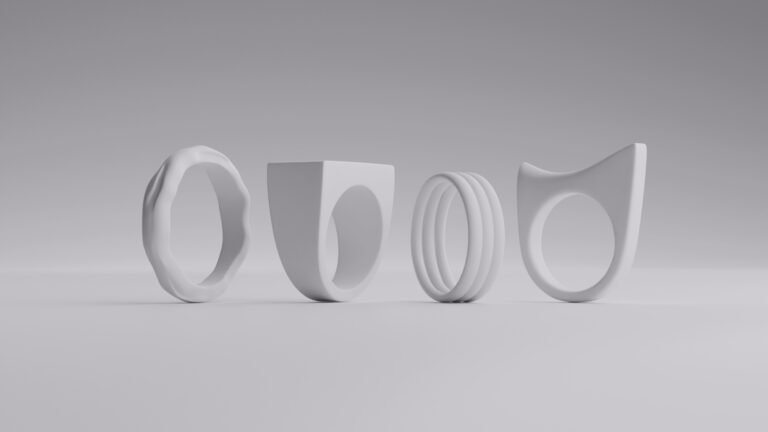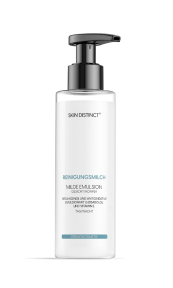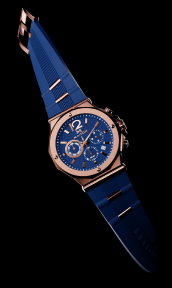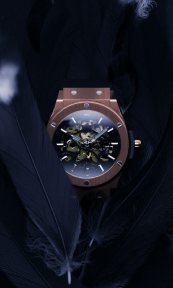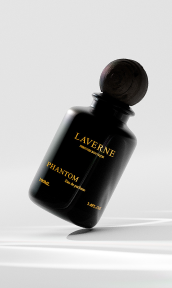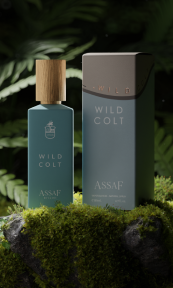The rise of 360-degree product photography is revolutionizing e-commerce and visual marketing. For those looking to master this technique, following essential 360 product photography tips can greatly enhance the quality and effectiveness of their images. This immersive approach to showcasing products is more than just a trend; it has become a key factor in influencing consumer decisions.
In an era where online shoppers demand a richer, more interactive experience, 360-degree product images allow them to engage with products in a way that simulates an in-store experience.
Why is 360-degree Product Photography Important for Your Business?

In today’s highly competitive digital landscape, 360 product photography has emerged as a game-changer for e-commerce and visual marketing. This technique allows online shoppers to view products from every angle, providing a dynamic and interactive experience that mimics in-store shopping.
As the e-commerce market continues to grow, businesses must find ways to stand out and meet evolving consumer demands. 360 product photography offers a powerful solution by delivering a more immersive, engaging, and informative shopping experience.
Meeting Consumer Expectations in a Visual-First World
Consumers today expect a rich visual experience when shopping online. According to a study, 91% of consumers report that visual content is the most influential factor in their purchasing decisions. Shoppers want to see products in detail, explore their features, and gain a sense of their real-world look and feel.
Traditional 2D images and product descriptions are no longer sufficient, as they often leave customers with unanswered questions about the product’s size, texture, or quality.
360-degree product photography addresses this gap by allowing users to rotate, zoom in, and inspect products from all angles. This interaction helps build confidence, as shoppers feel they have thoroughly examined the item before making a purchase.
The ability to virtually “handle” the product not only enhances the customer experience but also increases the likelihood of a purchase, as it reduces the uncertainty that often comes with online shopping.
Enhancing Engagement and Reducing Returns
Engagement is a critical factor in the success of online shopping platforms. 360-degree product photography not only grabs attention but also keeps potential buyers engaged for longer periods.
The interactive nature of rotating and exploring a product makes the shopping experience more enjoyable and intuitive. This increased engagement translates into longer session durations on e-commerce websites, higher click-through rates, and ultimately higher conversions.
Additionally, 360 photography helps reduce product return rates. One of the main reasons for returns in e-commerce is the product not meeting the customer’s expectations. By offering a complete view of the product, including its dimensions, materials, and other key details, 360-degree images help set accurate expectations. Customers are less likely to be surprised by the product’s appearance, which results in fewer returns and greater customer satisfaction.
Boosting Conversion Rates and Sales
360-degree product photography has a proven impact on conversion rates. Research indicates that interactive product views can increase conversions by as much as 30-40%. The ability to explore a product in detail allows consumers to make more informed decisions, giving them the confidence to buy.
Additionally, products presented with 360-degree views tend to perform better across multiple sales channels, including e-commerce websites, marketplaces like Amazon, and social media platforms.
For example, major retailers like IKEA and Nike have integrated 360-degree product photography into their e-commerce strategies, seeing noticeable improvements in customer engagement and sales.
The immersive experience not only helps customers visualize products more accurately but also encourages impulse buys, as shoppers feel more assured about their purchasing decisions.
Strengthening Brand Credibility and Trust
In an age where trust is paramount, 360 product photography helps establish credibility. High-quality, interactive images signal professionalism and attention to detail, which can positively impact how consumers perceive a brand.
Brands that invest in 360 photography demonstrate transparency, as they allow customers to inspect their products from every angle, fostering trust in the product’s quality.
In industries where visual appeal and detail are crucial, such as fashion, electronics, and home goods, 360-degree imagery becomes even more important.
Offering an enhanced product experience can elevate a brand’s reputation, making it more competitive in crowded markets. Consumers are more likely to trust and return to brands that provide an honest and thorough product presentation.
Differentiating from Competitors
With online shopping becoming increasingly saturated, standing out from the competition is more challenging than ever. Businesses that incorporate 360 product photography differentiate themselves by offering a superior user experience.
While many competitors might still rely on static 2D images, brands that embrace interactive visuals demonstrate innovation and a commitment to customer satisfaction.
In addition, 360-degree images are more likely to be shared on social media and other digital platforms. The uniqueness and interactivity of these visuals make them highly shareable, extending a brand’s reach and generating organic traffic.
This social media-friendly format also opens doors for influencer partnerships and user-generated content, further enhancing brand visibility.
Supporting Omnichannel Marketing and AR Integration
360 product photography plays a crucial role in omnichannel marketing strategies. As consumers move seamlessly between devices—switching from mobile to desktop to tablet—360-degree images provide a consistent and engaging product experience across platforms.
Whether viewed on a smartphone or desktop, these images offer the same immersive interaction, making them perfect for both traditional e-commerce sites and mobile apps.
Moreover, 360 product photography integrates well with emerging technologies like augmented reality (AR). As AR becomes more widespread in e-commerce, 360-degree images can serve as the foundation for AR-enabled experiences, where customers can “place” virtual products in their environment or interact with them in more dynamic ways. This added layer of interactivity further enhances the shopping experience, especially in sectors like home decor and fashion, where visualization is key.
By providing an interactive and immersive product experience, it caters to modern consumer demands for transparency, engagement, and detail. The impact of 360-degree imagery extends beyond higher sales and conversion rates—it also fosters brand trust, reduces returns, and sets businesses apart from competitors in an increasingly crowded marketplace.
Step-by-Step Guide for Successful 360 Product Photography

Creating professional 360 product photography requires attention to detail, the right equipment, and an efficient workflow. From capturing the images to post-processing and optimizing them for online platforms, every step plays a critical role in producing high-quality, interactive product visuals. To help you achieve flawless 360-degree product photography, we’ve prepared a guide. So, let’s get started!
Equipment Selection
Investing in the right tools is essential for capturing sharp, consistent, and professional-looking images. Here’s a breakdown of the key equipment you’ll need:
- Camera: A DSLR or mirrorless camera with a high resolution (at least 24MP) is ideal. Look for models with manual settings, so you can control exposure, white balance, and focus, which is critical for maintaining consistency throughout the shoot. Cameras with tethering capabilities allow you to preview shots in real time on a computer, reducing mistakes during shooting.
- Tripod: A sturdy tripod is essential to keep the camera perfectly stable throughout the shoot. Even the slightest movement can cause inconsistencies in the 360 sequence. Make sure the tripod allows for height and angle adjustments for flexibility in framing.
- Turntable: A motorized turntable designed for 360 product photography is key. These devices allow the product to rotate at precise intervals, ensuring each shot is captured from an exact angle. Look for turntables with adjustable speed settings and a non-reflective surface to prevent unwanted reflections.
- Lens: A 50mm or 85mm lens provides a natural field of view without introducing distortion. For smaller products, like jewelry or electronics, a macro lens can help capture fine details. Choose a lens with a wide aperture (f/2.8 or smaller) to ensure good light intake and depth of field control.
- Remote Shutter Release: Using a remote shutter release eliminates camera shake when capturing each frame. If you’re tethered to a computer, shooting can also be triggered remotely through the camera’s software.
Studio Setup
The studio environment plays a crucial role in determining the quality of your 360 images. Here’s how to set it up for success:
- Background: Use a seamless white or gray background to create a clean, distraction-free image. For a professional touch, consider using a lightbox or infinity backdrop to eliminate hard edges and shadows. If you’re photographing reflective products, opt for matte backdrops to reduce glare.
- Lighting: Proper lighting is the cornerstone of any great photo, especially for 360 product photography. The goal is to achieve even, soft lighting with minimal shadows and highlights. Use continuous LED lights or softboxes to ensure consistent lighting across all images. Position lights at 45-degree angles from the product to create balanced, diffused light, and consider adding a ring light or fill lights if needed to eliminate harsh shadows. When photographing shiny or reflective products like glass, metal, or jewelry, use a light tent. This diffuses the light from all directions, reducing unwanted reflections and glare on the product’s surface.
- Turntable Positioning: Place your turntable in the center of your backdrop and ensure it’s level. The product should be positioned at the exact center of the turntable, allowing for even rotation.
Capturing the Images
Once your equipment and studio are set up, it’s time to start shooting. Keep in mind these steps for precise and consistent 360-degree image capture:
- Manual Mode: Keep your camera in manual mode for full control over the exposure, shutter speed, and aperture. This ensures consistency across all images. Use a shutter speed of around 1/125 to freeze motion and an aperture of f/8 or higher to maintain a deep depth of field, keeping the entire product in sharp focus.
- ISO: Keep the ISO as low as possible (usually 100 or 200) to reduce noise and maintain image clarity.
- White Balance: Set your white balance manually or use a gray card for accurate color representation. This prevents color shifts that may occur when using auto white balance during a multi-shot sequence.
- Focus: Switch to manual focus and focus on the most important area of the product. Lock the focus for the entire shoot to ensure all images are uniformly sharp.
- Shooting the Sequence: Rotate the turntable in even intervals. For smooth 360-degree playback, aim for at least 24 images per full rotation. For higher-quality, more detailed rotations, capture 36 to 72 images. Most motorized turntables will allow you to set the degree of rotation for each shot (e.g., 10°, 15°, or 30°). Take test shots to ensure proper exposure and focus before committing to the full rotation sequence.
Post-Processing the Images
Post-processing is essential to perfect the 360-degree image sequence, ensuring all frames are visually cohesive and professional. Here are the key steps for editing your images:
- Batch Editing: Use software like Adobe Lightroom to apply consistent edits across the entire set of images. Adjust exposure, contrast, white balance, sharpness, and saturation uniformly to ensure the product looks identical in each frame. This can be done efficiently using Lightroom’s “sync” feature.
- Background Cleanup: If the background isn’t perfectly seamless, use tools like the Pen Tool or Magic Wand in Adobe Photoshop to remove imperfections. For products with complex shapes, consider using AI-powered background removal tools to speed up the process.
- Color Correction and Sharpening: Enhance colors and apply sharpening for clarity, but be cautious not to over-process, as this can create a harsh, unnatural look. Subtle sharpening ensures the fine details of the product remain crisp when zoomed in.
- Image Alignment: Ensure each frame is perfectly aligned with the others. Misaligned images will cause the product to “jump” or appear jittery when rotated. Some 360-degree photography software provides automatic alignment, but manual adjustments may be necessary.
- File Format and Compression: Save your images in a web-friendly format, such as JPEG for smaller file sizes or PNG if transparency is needed. Ensure file compression is optimized to balance load times with image quality. Images should be around 200-500 KB for optimal web performance without losing too much detail.
Creating the 360-degree Product View
Once your images are ready, the next step is stitching them together to create the interactive 360-degree view. You can either let us help you, or use specialized 360 photography software to achieve this:
- 360 Image Software: Several platforms provide user-friendly interfaces to stitch your images into a seamless 360-degree product view. These platforms offer features like adjusting the rotation speed, adding zoom capabilities, and integrating touch/swipe controls for mobile devices.
- Interactive Features: Many 360 platforms allow you to add “hotspots” within the image. These are clickable areas where you can provide additional product details, dimensions, or even related products. Hotspots enhance the user experience by making the product view more informative and interactive.
- Exporting for the Web: Once your 360 view is assembled, export it in a format optimized for your e-commerce platform. Most 360 software offers direct integrations with Shopify, Magento, WooCommerce, and other platforms, or provides an HTML embed code that can be easily inserted into your product pages.
Prepare them for Online Mediums
To ensure your 360 product images are optimized for fast loading and responsive on all devices, follow these best practices:
- Image Compression: Compress your images using online tools like TinyPNG or JPEGmini to reduce file sizes without losing quality. Smaller files mean faster loading times, which is critical for user experience and SEO.
- Mobile Optimization: Ensure your 360-degree images are responsive across devices. Many users browse and shop on mobile, so make sure the images load quickly and offer smooth rotation on smartphones and tablets. Touch-based navigation should be intuitive for users on mobile devices.
- SEO Optimization: Optimize the file names and alt text for each image with relevant keywords. This helps search engines index your product pages, improving visibility and driving organic traffic to your site. Descriptive alt text also ensures your images are accessible for users with visual impairments.
Achieving successful 360 product photography requires the right combination of equipment, studio setup, shooting techniques, and post-processing. By following these detailed steps, you can create high-quality, interactive product views that enhance customer engagement, improve conversion rates, and set your brand apart in the competitive e-commerce landscape. Investing the time and effort into producing top-tier 360 product images is well worth it, as it can significantly impact your business’s online presence and sales performance.
Optimizing 360 Product Images for Online Platforms

Once you’ve completed the photography and editing process, optimizing your 360-degree images for online use is crucial. Here are key considerations:
Load Time Optimization
Slow-loading websites can lead to high bounce rates. Compress your 360 images to reduce file size without sacrificing image quality. Tools like TinyPNG or JPEGmini are effective for this. Also, choose the right hosting provider to ensure fast and reliable image delivery.
Mobile-Friendly Experiences
With a growing number of shoppers using mobile devices, make sure your 360-degree images are responsive. The images should load quickly and interact seamlessly on smartphones and tablets. Consider touch-based navigation options, allowing users to swipe through the photos effortlessly.
Interactive Features
Interactive elements can enhance the user experience and drive conversions. Include zoom functionality to let users inspect intricate details of your product. Hotspots within the 360 view can also offer additional product information, callouts, or links to related products, creating a more informative shopping experience.
SEO Optimization
Use descriptive alt text for your 360 images to improve their visibility on search engines. Optimizing filenames and incorporating keywords related to your product in the image descriptions will boost your search engine rankings, drawing more organic traffic to your product pages.
Optimizing 360 product images for online platforms is essential for ensuring a seamless and engaging shopping experience. By focusing on image compression, mobile responsiveness, interactive features, and SEO, you can significantly enhance user experience and site performance. By following these best practices, you can leverage 360 product photography to its fullest potential, enhancing customer satisfaction, boosting conversion rates, and staying ahead in the competitive e-commerce landscape.
Wrapping up
360 product photography is a powerful tool that offers e-commerce businesses a competitive edge in 2025’s visually-driven digital landscape. By providing consumers with an interactive, detailed view of products, you can enhance user engagement, reduce return rates, and ultimately increase sales. Following best practices in equipment setup, shooting techniques, and post-processing, combined with optimization for online platforms, will help you achieve professional-quality 360 images that captivate and convert shoppers.
FAQ
What is 360 product photography, and why is it important for e-commerce?
360 product photography allows customers to view a product from every angle by rotating it interactively. It enhances the online shopping experience by providing a more detailed and realistic view, which helps reduce uncertainty and boosts buyer confidence, leading to higher conversion rates.
What equipment is essential for capturing high-quality 360-degree product images?
Key equipment includes a DSLR or mirrorless camera, a sturdy tripod, a motorized turntable, appropriate lighting (like softboxes or continuous LED lights), and a remote shutter release. These tools ensure stability, consistency, and professional image quality throughout the shoot.
How does 360 product photography impact customer engagement and sales?
It significantly increases customer engagement by allowing shoppers to interact with products. The immersive experience leads to longer browsing times, higher click-through rates, and ultimately a boost in sales. It can also reduce product returns by providing more accurate representations of items.
How do I optimize 360 product images for fast loading on e-commerce platforms?
To optimize load times, compress your images using specific tools. They can either be online tools or dedicated apps. Ensure they are responsive for mobile users, and consider using specialized hosting services to ensure quick delivery across different devices.
What role does post-processing play in 360 product photography?
Post-processing ensures consistency and professionalism in your image sequence. It involves batch editing for exposure, color correction, sharpening, and removing background imperfections. Proper post-processing ensures smooth rotation and an appealing final product on e-commerce platforms.






